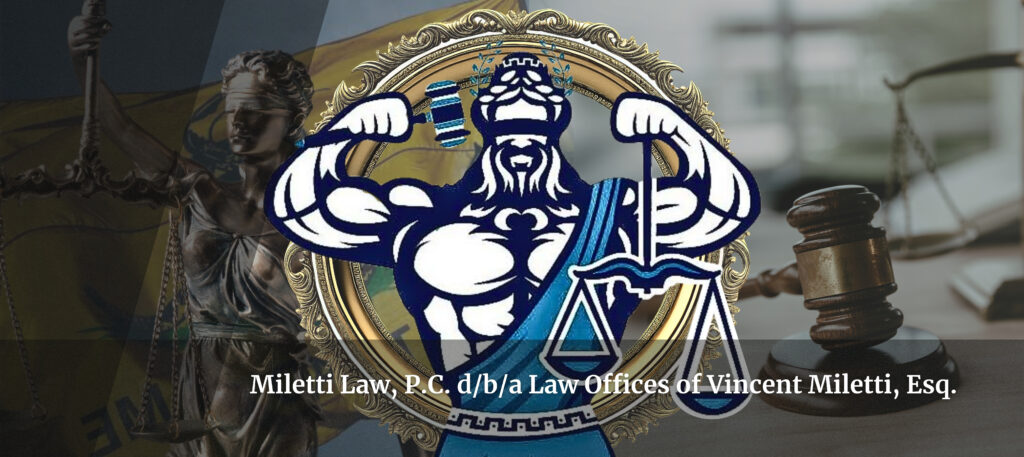Here at the Law Office of Vincent Miletti, Esq. and the home of the #UnusuallyMotivated movement, we take pride as a resilient and dependable legal services firm, providing such services in both a traditional and online, web-based environment. With mastered specialization in areas such as Employment and Labor Law, Intellectual Property (IP) (trademark, copyright, patent), Entertainment Law, and e-Commerce (Supply Chain, Distribution, Fulfillment, Standard Legal & Regulatory), we provide a range of legal services including, but not limited to traditional legal representation (litigation, mediation, arbitration, opinion letters, and advisory), non-litigated business legal representation and legal counsel, and unique, online legal services such as smart forms, mobile training, legal marketing, and development.
Still, here at Miletti Law®, we feel obligated to enlighten, educate, and create awareness about how these issues and many others affect our unusually motivated® readers and/or their businesses. Accordingly, to achieve this goal, we have committed ourselves to create authoritative, trustworthy, & distinctive content. Usually, this content is featured as videos posted on our YouTube Channel https://www.youtube.com/channel/UCtvUryqkkMAJLwrLu2BBt6w and blogs that are published on our website WWW.MILETTILAW.COM. With that, the ball is in your court and you have an effortless obligation to subscribe to the channel and sign up for the Newsletter on the website, which encompasses the best way to ensure that you stay in the loop and feel the positive impact of the knowledge bombs that we drop here!
As the authoritative force in Employment Law, it only seemed right to introduce one of the many upcoming series where we remain persistent in introducing a variety of topics, which will look to not only educate but also deliver in a sense that only Miletti Law® can. In this regard, this is Part XVI of our ongoing series on the “Fundamentals of Trademarks,” where a number of continuing blogs have been dedicated to exploring trademarks in detail & depth. In Part XV, we continued our discussion on the five key aspects of trademark enforcement, including “Dilution,” “Initial Interest Confusion,” “Reverse Confusion,” “Likelihood of Confusion,” and “Standing to Sue.” Having hammered the first three in the past three blogs under this series, we have discussed, in this blog and Part XVI, the likelihood of confusion as the next key aspect in trademark enforcement.
The Likelihood of Confusion and its Role on Trademark Enforcement
The trademark law provides trademark owners with the exclusive right of using, in commerce, their marks in association with the particular products, goods, and/or services linked to the mark. However, a “junior” party may decide to adopt and use a similarly confusing mark in a manner that consumers would be confused and, as a result of this confusion, believe that there exists a connection (in the form of sponsorship, affiliation, or source place) between the products, goods, and/or services of a “senior” party and those of the junior party. While the junior party could wrongfully benefit from the goodwill associated with the products, goods, and/or services of the senior user, this amount to infringement.
It is crucial to understand that in order to prevail on an infringement claim, such trademark owners who believe that their trademark rights have been infringed upon do not have to wait until there is actual confusion in commerce since a “likelihood” of confusion is the standard for establishing trademark infringement. Furthermore, establishing the intentionality of an infringement case is not required when bringing such a claim to court. While the balance among several factors determines the existence of a likelihood of confusion, every Court of Appeal in the U.S. adopts its own articulation concerning the particular factors that should be considered when the likelihood of confusion is being assessed by district courts. For instance, while named for the case in which they were initially set forth, the eight Polaroid factors are applied by courts in the Second Circuit as follows:
- The sophistication of consumers in the relevant market
- Quality of the products
- Evidence that bad faith was involved in adopting the defendant’s mark
- Evidence of actual consumer confusion
- Evidence that the plaintiff may “bridge the gap” by developing a product for sale in the market of the defendant’s product
- The proximity of the products and their competitiveness with one another
- The similarity of the marks-and-
- Strength of the plaintiff’s trademark
Concerning other Circuits, there is a striking similarity between these and other factors that courts rely upon. However, while not all factors carry equal weight when courts are analyzing the likelihood of confusion, these factors are not exclusive and no single one can be termed as determinative. Nonetheless, there must be an existence of an actionable likelihood of confusion in the marketplace. However, courts recognize and consider the likelihood of insufficiency when the differences and similarities between two marks are being compared side-by-side. Instead, considering the manner of appearance of the two marks in commerce and to consumers determines the likelihood of confusion in a given case. Therefore, the presentation of survey evidence and expert witness is advisable when drafting and bringing a likelihood of consumer confusion claim in a court.
In the next blog and Part XVII of the series, we shall move the discussion forward by hammering on “Standing to Sue” as the next and final key aspect that should be considered in trademark enforcement.
Until then, stay tuned for more legal guidance, training, and education. In the interim, if there are any questions or comments, please let us know at the Contact Us page!
Always rising above the bar,
Isaac T.,
Legal Writer & Author.
 Professional Legal & Business Services And Representation - English & Espanol!
Professional Legal & Business Services And Representation - English & Espanol!

 314-648-2586
314-648-2586 CALL US NOW
CALL US NOW







